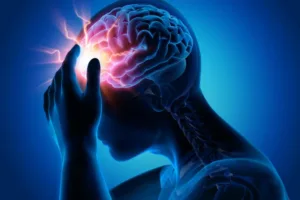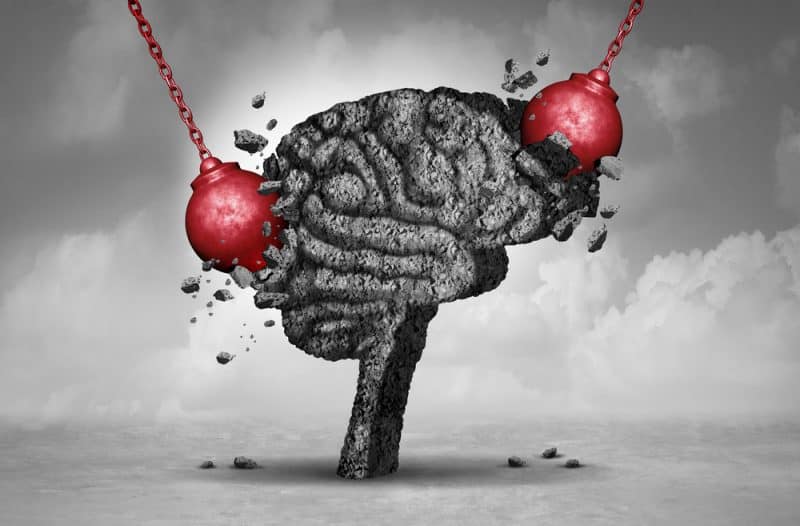Headaches are a common ailment experienced by people of all ages, backgrounds, and walks of life. They can range in intensity from mild discomfort to debilitating pain that significantly impacts daily functioning.
Headaches can be broadly classified into two categories: primary headaches and secondary headaches. While both types can cause discomfort and distress, they originate from different underlying causes and exhibit distinct characteristics.
In this article, we delve into the details of primary and secondary headaches, exploring their differences in terms of causes, symptoms, and treatment approaches.
Primary Headaches:
Primary headaches are a category of headaches in which the headache itself is the main medical condition. They are not caused by an underlying medical condition or disease, making them the primary problem.
This category includes several common headaches, such as tension-type headaches, migraines, and cluster headaches.
- Tension-Type Headaches: Tension-type headaches are the most common type of primary headache and are often described as a dull, constant ache that can feel like a tight band around the head. They usually result from muscle tension in the neck, scalp, and shoulders and can be triggered by stress, poor posture, or anxiety.
- Symptoms: Tension-type headaches typically involve bilateral (both sides of the head) pain, with a sensation of pressure or tightness. They are usually of mild to moderate intensity and do not worsen with physical activity.
- Treatment: Over-the-counter pain relievers, stress management techniques, improving posture, and relaxation exercises are often recommended for managing tension-type headaches.
- Advanced Treatment: For resistant headaches, nerve blocks can be used that target specific nerves and trigger points using a local anesthetic. If successful, Botox®, can be considered for longer-term control.
- Migraine Headaches: Migraine headaches are characterized by severe throbbing pain, often on one side of the head, and are associated with other symptoms such as nausea, vomiting, sensitivity to light (photophobia), and sensitivity to sound (phonophobia). Migraines are believed to involve neurological and genetic factors.
- Symptoms: Migraines often present with an aura, which is a set of sensory disturbances that may include visual changes, tingling sensations, and difficulty speaking. The pain is usually moderate to severe and can last for hours to days.
- Treatment: Migraines can be managed with a combination of lifestyle changes, identifying triggers, medications (both preventive and acute), and relaxation techniques.
- Advanced Treatments: Other options are repurposed drugs such as anti-seizure, anti-depressant and anti-hypertensive drugs. The newest category of drugs are the CGRP antagonists, which are quite expensive but are showing great promise. Of course, a trial of nerve blocks and consideration of Botox® can always be helpful for migraines.
- Cluster Headaches: Cluster headaches are the least common but among the most intense types of primary headaches. They are characterized by excruciating pain, usually around one eye, and occur in clusters over a period of weeks to months. They often strike at the same time each day.
- Symptoms: Cluster headaches are known for their severity and distinctive pattern. They cause intense, stabbing pain and are often accompanied by red or watery eyes, nasal congestion, and restlessness.
- Treatment: Treatments for cluster headaches may include medications to alleviate pain and reduce the frequency of attacks. In some cases, oxygen therapy or nerve blocks might be recommended. Botox(™) can be considered a preventative for cluster headaches.

Secondary Headaches:
Unlike primary headaches, secondary headaches are symptoms of an underlying medical condition or disease. A secondary headache acts as a warning sign that there is an underlying problem in the body. Identifying and treating the root cause of the secondary headache is crucial to managing the pain effectively.
Common Causes of Secondary Headaches:
- Infections: Conditions like sinusitis, meningitis, and encephalitis can lead to secondary headaches. The headache often arises due to inflammation and increased pressure caused by the infection.
- Trauma: Head injuries, concussions, and whiplash can result in secondary headaches. The pain may result from damaged blood vessels, nerves, or tissues in the head and neck.
- Medical Disorders: Various medical conditions, such as hypertension (high blood pressure), intracranial bleeding, and brain tumours, can lead to secondary headaches.
- Medications: Some medications, particularly those that dilate blood vessels, may cause secondary headaches as a side effect.
- Withdrawal: Discontinuing the use of certain substances, such as caffeine or certain pain medications, can lead to withdrawal headaches.
Symptoms and Treatment of Secondary Headaches:
The symptoms of secondary headaches vary widely based on the underlying cause. Therefore, treatment approaches also depend on addressing the root issue. For example:
- Infections: Treating the infection through antibiotics or antiviral medications can help alleviate secondary headaches.
- Trauma: Rest, pain management, and monitoring for any serious complications are crucial in treating secondary headaches caused by trauma.
- Medical Disorders: Addressing the underlying medical condition is key. This may involve medications, surgery, or other medical interventions.
- Medications: Adjusting or discontinuing the responsible medications under medical supervision can help resolve secondary headaches caused by medication side effects.
- Withdrawal: Gradually reducing the substance causing withdrawal and managing symptoms through medical guidance can alleviate secondary headaches.
When to Seek Medical Attention:
While most headaches are benign and can be managed with over-the-counter remedies and lifestyle changes, certain symptoms should not be ignored. Seek immediate medical attention if a headache is accompanied by:
- Sudden and severe pain: Especially if it’s the worst headache you’ve ever experienced.
- Neurological symptoms: Such as weakness, numbness, difficulty speaking, or confusion.
- Visual disturbances: Like sudden blurred vision, double vision, or loss of vision.
- High fever: Especially if a stiff neck accompanies it.
Conclusion:
Understanding the differences between primary and secondary headaches is crucial for proper diagnosis and effective treatment. Primary headaches are standalone conditions, while secondary headaches are symptoms of underlying health issues.
Identifying the type of headache you’re experiencing, its characteristics, and associated symptoms can guide you and your healthcare provider in choosing the appropriate treatment plan. Remember that seeking medical attention for persistent or severe headaches is important to ensure timely and accurate diagnosis and management.


















